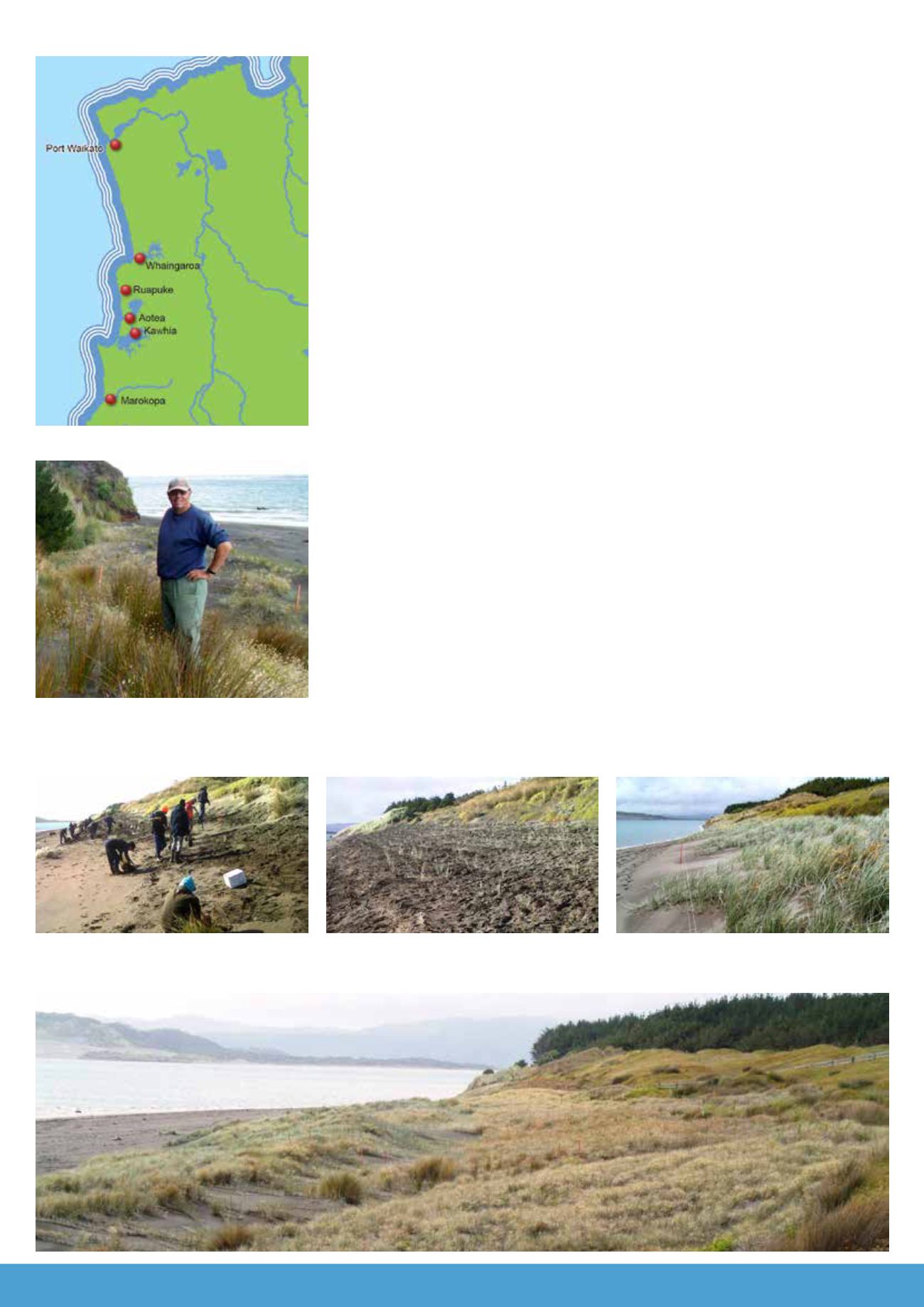
10
Beachcare groups:
West Coast
Aotea
In 2012, Aotea Beachcare’s second year, local community volunteers
planted 3780 native coastal plants. This was followed by a further 1000
plants in 2013 – a huge effort for a new group!
Amongst these were 260 native trees and shrubs planted behind the dunes
to help restore the coastal forest zone that has been almost completely lost.
The native tree species planted by the group, such as pōhutukawa, taupata,
karo and ngaio, will provide habitat and food for native birds and wildlife and
shade for walkway users.
The coastal forest zone is also an important part
of the natural character and biodiversity values of
our coastlines, but unfortunately original examples
of this type of ecosystem are now very rare.
The native sand-binding species spinifex and
pīngao, that were planted in 2012 in gaps in
the fore-dune, are now well established and
functioning well. The dunes have built up well
in the planting areas and, thanks to cover of
plants, are now able to self-repair in areas that
were eroded during storm events through the
year. As the vertical erosion scarps slump, the
spinifex send out stolons, or runners, that grow
toward the sea and put down roots helping to
restabilise the dune and catch windblown sand
to help reform the protective dune barrier.
The Aotea community held its 50th Jubilee in
2012 and took the opportunity to officially open
the walkway constructed by local Beachcare
members over the summer break. A memorial
plaque was unveiled at the walkway entrance
and the new signage revealed. The walkway
has already proved a great success and the
formalised access ways have already allowed
the native vegetation to bounce back in the
areas that were being trampled. Enhancement
plantings around the walkway and beach access
ways will be a focus for the group’s planting
plans for the next few years.
During the 2012 working bee.
The previously bare dune now planted.
One year later the dune plantings are established and
growing seaward, naturally extending the
dune width.
Aotea Beachcare leader Barry Peake checking
some of the back-dune plantings.


